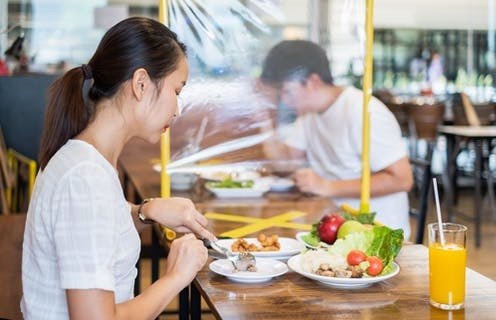Here is what some of the best websites are suggesting we should do post-lockdown
Run low, mid, and high cash flow forecasts for 25, 50, and 75 per cent of previously forecasted sales
The zero revenue or nominal revenue lockdown period we’re currently in will prove to be much easier to understand than what all of our companies are entering into as the economy comes back to life. As staff is brought back onto the payroll and the operating expenses of the business begin to generate, many of our businesses will go through the highest-risk period of this crisis. Understanding your company's burn-rate and the unit economics of the different scenarios on the front-end will enable proper labour planning. Find out more here
Make your restaurant feel like a safe spot to guests

The first step in combating coronavirus is to make your restaurant as clean as possible. The EPA has created a list of disinfectants that are effective at killing SARS-CoV-2, which you can find here. (Note that regular soap is effective. The virus is coated in an oily membrane, which means it is disintegrated by soap and water.)
Pay special attention to any surface customers touch, like light switches and doors, and any system that circulates air. Provide antibacterial gloves for your team, especially if they handle cash. (Some operators are going temporarily cashless.) Finally, many restaurants have scheduled multiple daily professional cleanings. Take every initiative you can to keep your restaurant disinfected.
But don’t just clean to make your restaurant safe.
Send a message to your customers that your restaurant is a haven from what’s outside.
Leave a hint of disinfectant in the air. Have your bussers make performances of wiping down tables and chairs after each guest leaves. Put up signage touting your frequent and committed sanitizing efforts. Add disinfectant napkins to service.
Make an abundance of caution part of your brand. Put language about your efforts on your site and in your booking flow. If you choose to put more space between tables, broadcast that on social media. Do everything you can to make guests seek out your restaurant as a place of refuge.
Lastly and most importantly, if you are not able to guarantee sanitary conditions, consider closing your restaurant.
Create compelling content
We don’t want to belabor Bill Gates’ often-quoted “content is king,” but the impact of content on brand growth is hard to deny. Creating unique content regularly is a great way to increase brand awareness, strengthen your brand reputation, and keep customer attention, even while you’re shut down.
People are online now, more than ever before, as many of them are stuck at home, glued to their smartphones and laptops. So, what better way to nurture customer relationships than through captivating content that speaks directly to their needs and interests during this time?
The best part is that content is relatively easy to create – you can do it just by using your smartphone (more on that in a moment).
So, what kind of content could you create to boost your restaurant marketing efforts?
Spilling into open spaces

From potential city-wide open-air café bars to limited capacity and table-service only – how are pubs and bars across the globe planning to reopen under social distancing measures?
Restaurants and casual dining specific guidelines
Overseeing client encounters during the lockdown
Clients new desires
Clients in China rushed to adjust their utilization propensities during the lockdown by changing to portable requesting and home delivery. For Starbucks, 80% of requests were made on a PDA during the lockdown, of which 30% were delivered to the client, and half gathered as a takeaway. For KFC, 84% of requests were from computerised channels, including advanced cell, convey stages, and a booth with portable instalment, in the first quarter of 2020, an increase of 29% compared with the same period a year ago.
